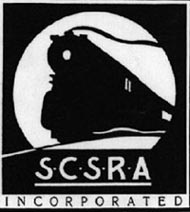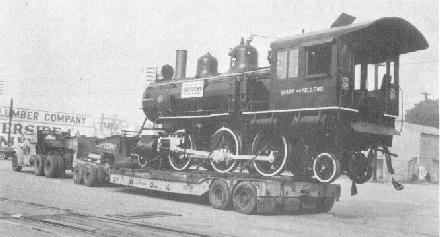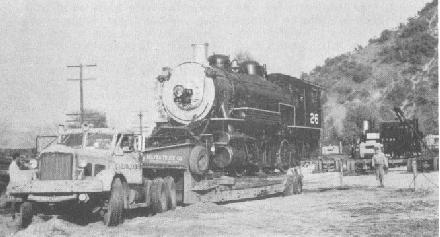
|
DEPARTMENTS
Intro to the SCSRA
|
Travel Town (continued)
Return to Page 2 | Page 3
It was easy now to see that the engine had possibilities, and so the park officials began to solicit locomotives and rolling stock in earnest. It was decided to call the place "Travel Town", and on December 14, 1952, the project was dedicated by Mr. George Hjelte, General Manager of Recreation and Parks, as a free recreational area. In a strategic location, about equidistant from Glendale, Burbank, Hollywood and other populous centers, it was once a World War II prisioner of war camp, later an encampment for Army troops, and now it was planted with grass and landscaped as a picnic ground, with tables and picnic facilities under the trees.
The Harbor Department was easily talked out of the two little saddle tankers which had been the cause of Travel Town's creation, and Belyea obligingly hauled the engines free of charge all the way fro the harbor. The Union Pacific had no locomotives in the area which they could donate, so they sent their oldest caboose, No. 2117, built in 1881 and originally a side-door type. This was placed behind 3025, and was the vanguard of a number of other pieces which were now offered, especially by the electric lines of the Los Angeles Area.
From the Pacific Electric Lines, came a combination baggage-passenger coach 1498, freight locomotive 1544, and from the Los Angeles Railway came trolley 536, one of the last of it's type in service. From various business firms and individuals came fire trucks, ancient delivery wagons, steam fire engines and other museum pieces, including a double decker 5th Ave. bus from New York City. a San Francisco cable car, and even a German V-1 buzz-bomb.
On May 22, 1953, the Santa Fe delivered 2-8-0 664, which they had hauled all the way from Galveston, Texas to Los Angeles. After it had been cleaned and repainted in the L.A. roundhouse, the engine was loaded onto trucks in Glendale, abd the patient and good-natured Belyea trucks set it down in Travel Town on the track just ahead of 3025. There were now four steam locomotives in the park, and they were still coming from all directions. The children had a wonderful time ringing the bells, pulling the throttles, working the Johnson bars and playing engineer to their heart's content. The tinier tots had their fun on the saddle tankers, which were more their size.
Though the exhibits were not guarded at night, other than the usual prowl cars belonging to the city police, there has been surprisingly little damage on the part of thoughtless boys who roam the river areas at night. A few broken light bulbs, steam gauge glasses and a window or two are the sum total of the damage in the first two years, but the addition of many new exhibits recently has caused an epidemic of broken windows in the trolleys, and obscene writings on the engines, so a strong, high, barbed wire fence has been erected around the entire seven acres, and vandalism has been reduced to a minimum.
In the summer of 1953, Dr. Johm Hiss, President of the Stockton Terminal and Eastern Railroad gave Travel Town the oldest steam locomotive them operating in the United States on a common carrier. Built in 1864, this engine first operated on the Western Pacific, then on the Central Pacific, and later on the Southern Pacific. The S.T. and E. acquired it in 1909, and now that it had outlived it's useful life, Dr. Hiss generously donated it to Travel Town. The S.P. delivered the engine at Glendale, free of charge, where Belyea loaded it and trucked it to the park, to be set down near the Santa Fe engine. Since No. 1 weighed only 35 tons, it seemed a leightweight to the now experienced locomotive haulers, the Belyea Truck Co., who at this writing can boast that they have hauled more, and heavier locomotives through city streets than any other truckers in the Country, excepting the time Baldwin presented their demonstration engine 60,000 to the Franklin Institute in Philadelphia, and that was a special and very expensive job.

Sharp and Fellows 7 leaving Glendale station on it's last ride, on a Belyea multi-wheeled trailer.

This shows how Belyea brought Western Pacific 26 to Travel Town which at that time was soaked by a
heavy rainstorm. The plight of the tractor in the foreground can easily be seen.
